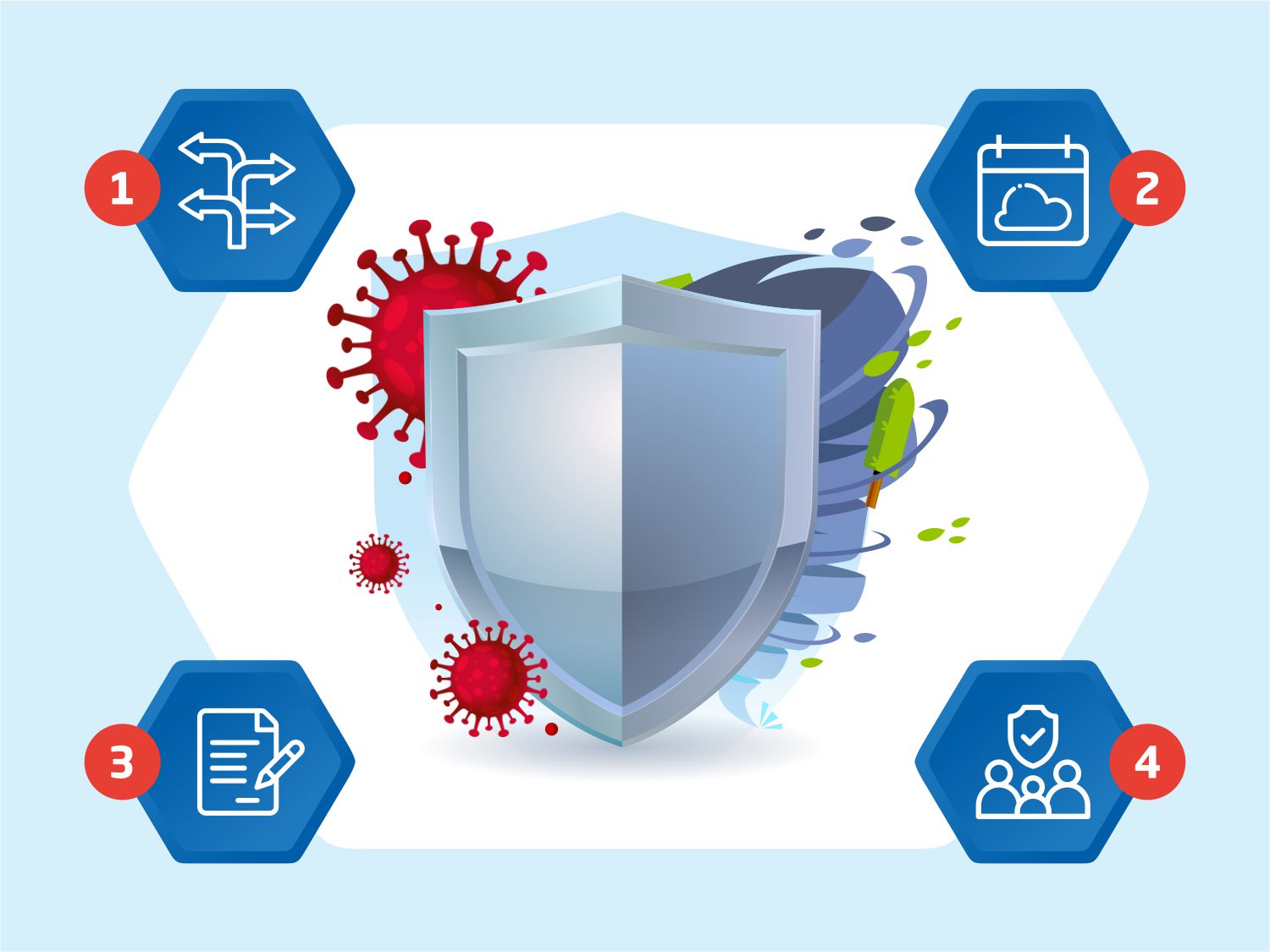
NATURAL DISASTER RESPONSE
DURING PANDEMICS
Disasters can happen at any time, and the occurrence of a pandemic, such as the world currently faces, means natural disaster becomes more challenging to manage and potentially more dangerous to communities. Dealing with response and recovery from natural disaster during the midst of the coronavirus pandemic raises an array of new and unsettling questions. Who has to respond? What assistance may be provided if hospitals are treating COVID-19 patients? What if there is already a scarcity of medical supplies and resources? Where are evacuees sheltered and housed if there is need to ensure displaced people can continue social distancing?
Additionally, the timeframe for managing such a multi-dimensional challenge could be up to months, and likely even years, throughout which both the pandemic response and potential natural disaster response must both be considered. There is also a history of epidemics that follow natural disasters.
The 2004 South Asian Tsunami that killed more than 250,000 people and displaced more than 1.7 million across 16 countries, also produced ideal conditions for an Acute Respiratory Infection outbreak in Aceh, Indonesia – already the worst hit region after the disaster. In 2010, the first Cholera outbreak in more than a century in Haiti resulted in 8,183 deaths, both amplifying and amplified by damage to infrastructure caused by the huge earthquake.
So on one hand, there is the fact that COVID-19 counter measures could hamper the emergency response to disasters, while on the other hand disaster situations will potentially disrupt current pandemic response actions (such as social distancing) that can increase the potential for increased spread of the virus.
With the current coronavirus pandemic adding a new layer of challenges and risks, community leaders must undertake structured planning for how they will deal with the worst-case scenario.
Planning includes asking and answering questions such as: What can go wrong? How likely is it to happen? What are the consequences? What resources do we need to mitigate the risk?
According to scientists at the University of Melbourne, there are four pre-emptive strategies that governments can adopt to counter the risks of COVID-19 and natural hazards.
PRE-EMPTIVE STRATEGIES TO COUNTER THE RISKS OF COVID-19 AND NATURAL HAZARDS
First, identifying possible pandemic-natural disaster hybrid scenarios, including worst-case scenarios is critical. This requires the building of new hybrid forecast models that combine existing pandemic projection models and natural hazard forecasting.
Second, emergency responses to extreme events can be modified in advance by considering seasonal weather forecasting models. As technology can provide predictions of possible natural hazards in the coming months, planning ahead is key.
Third, a re-design of policy responses is needed to address different natural hazards, with a focus on social distancing. Policy changes must be introduced to a wide range of post-disaster activities, ranging from emergency aid distribution to providing shelter.
Finally, supporting relief agencies serving lower income communities or regions and their governments is important, as impacts of compound effects on these areas are likely to be disproportionately high.
Although an epidemic does not usually fall within the disaster management sector, in terms of scale and suffering, it potentially should. While it may be difficult and hard to think of the additional risk caused by a second crisis at this time, risk management requires exactly that—staying ahead of events and always being prepared to respond.
Written by : Ina Rachmawati | Source : theconversation.com & www.preventionweb.net

